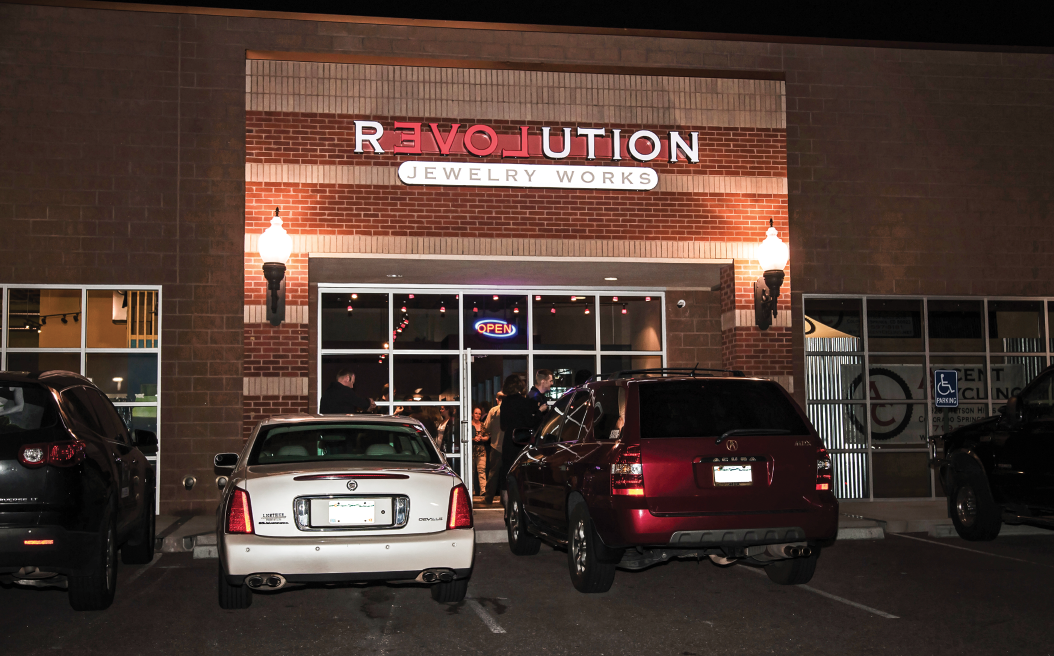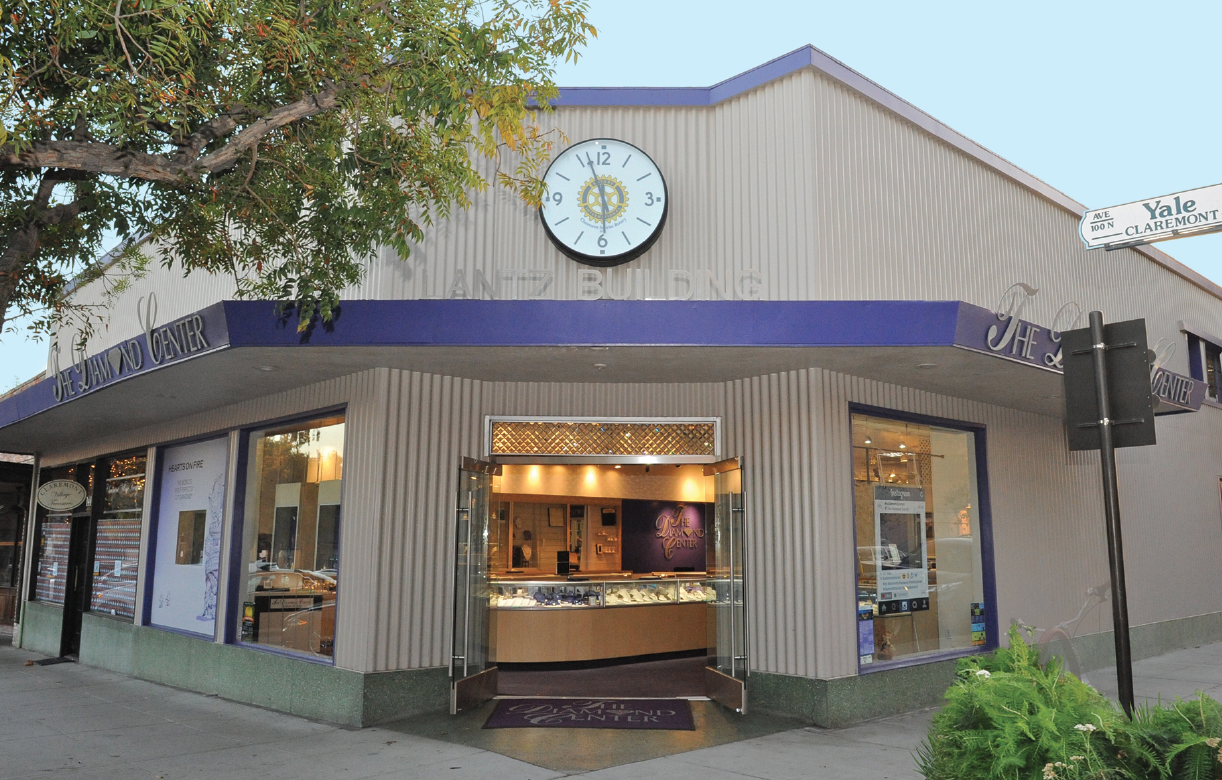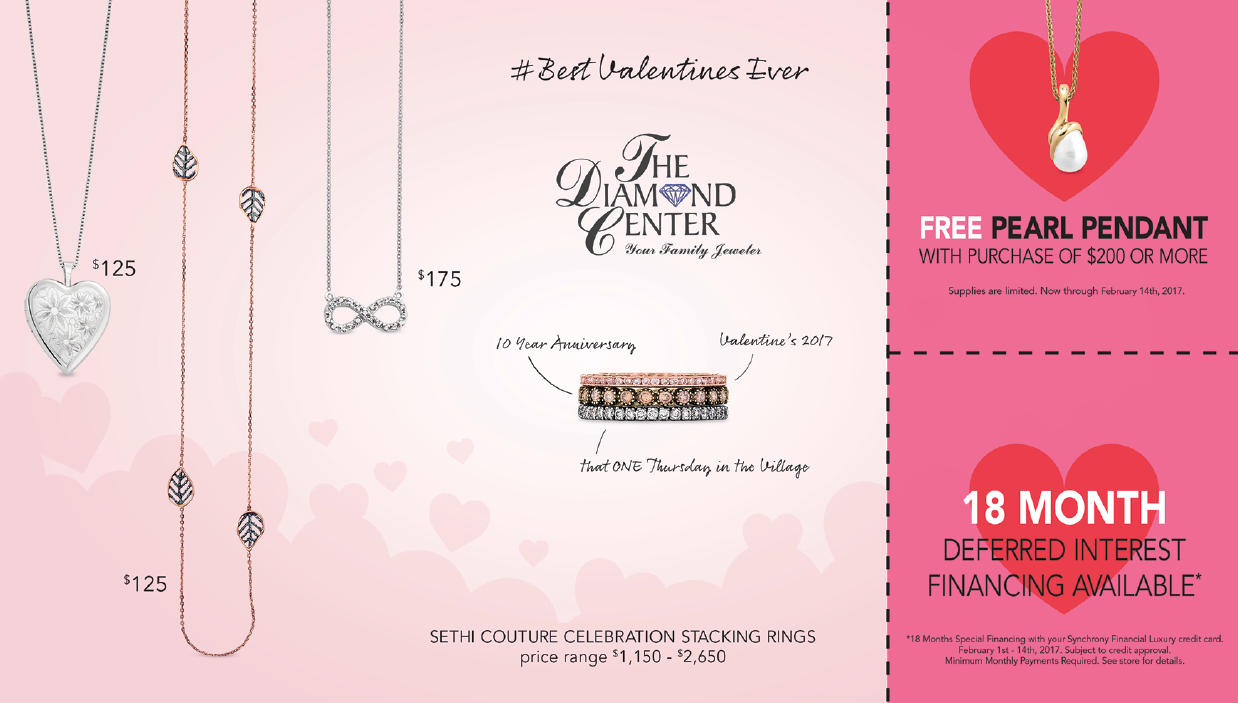
If you believe your chances of owning a million dollar store are one in a million, you may need an attitude adjustment.
Laurelle Giesbrecht’s French’s Jewellery is located in Wetaskiwin, a small prairie town of 14,000 people in Alberta, Canada, but she’s never viewed the store as a small-town establishment.
That kind of thinking would limit its potential.
“I look to what high-end luxury stores do in major cities, not what my closest competitor is doing,” she explains. “Kind of like an ‘aim for the moon, you might hit the stars’ type of philosophy.”
As a result, her annual revenues are on track to hit $2 million.
Advertisement
“People often walk into our store and say that it looks like a store that should be in New York,” she says. “That’s exactly what I want. To have a place where people see that luxury is deserved and affordable.”
Arbitrary or not, hitting seven figures is something many business owners aspire to. “It’s that elusive barrier,” says David Brown of the Edge Retail Academy, “like the four minute mile.”
Growth is not to be feared, says Brown. So if you want to own a million-dollar store, you have to begin to think and even act as if you are already there.
Likewise, Giesbrecht says that if you present your location as the million-dollar gem that it is, then it will be so. “If you are trying to achieve that next level, look and act like you are already there. Staff, clients and your operation as a whole will eventually fall into line with your vision.”
There is more than one route to $1 million. So ask yourself, “What does my journey to $1 million look like?” Will you reinvent your business model, increase your average retail value, or appeal to a different sector of the market to get there?
Tom Duma, owner of Thom Duma Fine Jewelers in Warren, OH, says to break the $1 million mark, he built a better team and strengthened systems and policies after joining a performance group in 2009. His team includes a controller, an assistant controller, an inventory manager and a sales manager. He’s implemented a turnover system, a training and recruiting plan, an aged-inventory system and a fast-seller reorder system. His leadership team built advertising, operating and purchase budgets. He also weighed vendor performance against the amount of real estate the products occupied in case.
Advertisement
These are issues everyone should be addressing because, frankly, Brown says, a business is either growing or dying.
Brown says you’ve got to make the investment in payroll before you see the return. Yes, that can be nerve-wracking, even counter-intuitive. Don’t think of it as boosting your payroll $50,000 a year; think of it in terms of how much revenue you need to generate by the week or the month to meet the larger payroll.
A growing business attracts enthusiastic applicants, too, as opposed to a stagnant business, where people go along for the ride.
One thing owners in a growth mode have in common is that they begin making decisions strategically rather than emotionally, particularly in hiring and buying. They develop more awareness and curiosity about what other people are doing, and rather than saying `I would never do that!’ they are open to new ideas, Brown says.
“Good growth is a natural evolution of a business,” Brown says. “Some businesses get stuck at a certain level, a certain mindset. But they need to have a mindset that growth is a good thing, not something to be feared. We live in very dynamic times and business owners have to think more dynamically.”
“Complacency is one of the most frightening states of mind you can find. It means people aren’t looking for ways to be better, and when you see that, you see that they often lose by default.”
Advertisement

TURNING POINTS
What’s So Special About $1 Million?
 hy aim for $1 million? In many ways, that goal is more psychological than practical.
hy aim for $1 million? In many ways, that goal is more psychological than practical.
A true financial milestone occurs at about $800,000, Brown says. Settle for less than $800,000 in revenue and you’re settling for a job with a salary. After that, the true benefits of being a business owner kick in.
You can monitor labor productivity more closely when you’re smaller, says Greg Crabtree, author of Simple Numbers, Straight Talk, Big Profits! When you’re growing, getting the required productivity for every dollar you spend on labor becomes your biggest challenge.
Vince Rath, owner of Optimum Retail Solutions, says that although there’s nothing wrong with being an owner-operator, it’s a trade-off. You can control your own hours, and working only with family can simplify some management issues. But there’s only so much money you can make when revenues hover around the $600,000 to $700,000 mark.
As your business grows, it is important to hire enough people to take responsibility for functional areas that you can no longer manage. A key talent is to know which tasks to reassign to new hires and which tasks to assign to current employees.
Structure is critical.
Define who is responsible for exactly what, Rath says. And create a consistent corporate culture. “Outline expectations and clearly define performance. Employees get confused when they are not able to interpret what expectations are.”
When you do reach $1 million, Rath says, guard against complacency, fatigue and adding too much expense or inventory too quickly.

Revolution Jewelry Works, which opened in 2014, will surpass $1 million in sales this year.
GOAL IN SIGHT
On the Way to $1 Million
 ennifer Farnes of Revolution Jewelry Works in Colorado Springs, CO, expects to meet her goal of $1 million this year, far ahead of the schedule she initially set. She’s been on the fast track from the beginning. When she opened in 2014, she expected to do $200,000 in business, and instead hit $400,000.
ennifer Farnes of Revolution Jewelry Works in Colorado Springs, CO, expects to meet her goal of $1 million this year, far ahead of the schedule she initially set. She’s been on the fast track from the beginning. When she opened in 2014, she expected to do $200,000 in business, and instead hit $400,000.
Farnes, who has a background in the advertising business, attributes her success, at least in part, to allocating 18 percent of gross revenues to advertising. Of that budget, 95 percent is dedicated to traditional media including TV, radio, newspaper and movie theater, and only 5 percent to social media. “A lot of people would find that really intimidating, but if you’re not allocating money to advertising, the only way people will find you is word of mouth. I’ve found that’s not the most reliable way of staying in business.”
Farnes’ message is to “come in and get a feel for what handmade fine jewelry really is. A lot of people come in because they have heard our message enough that it piques their curiosity.”
Be consistent and think long-term, she suggests. Set an annual budget and begin advertising with a medium you know.
“We do some social media, but really social media should be there strictly to bolster a message you already have out there.”
Farnes has developed a niche in custom jewelry with a full-service shop. Still, she says, if she switched her business model tomorrow, she’d still thrive, through a combination of advertising and treating customers like gold.
“It doesn’t really matter what you’re selling, it’s how you’re selling it,” she says. “Business ethics go along with that. If a customer is just outside of warranty dates, do you flex the rules? Help them. Fix it. Don’t live by hard lines because there are a lot of gray areas in making people happy. Ask them, ‘How can I make this better for you?’”
Part of keeping people happy is keeping turn-around time on repairs at four days, a deadline she wants to maintain as she grows.
“We’re hitting the threshold of the work we can handle, and I still need to be at the bench,” she says.
Farnes is in the enviable position of going through growing pains now, just three years into her retail business. She thought she’d be in her current location for 10 or 15 years; instead, she has to decide whether she can make the space work for a couple more years or transition to a stand-alone store already.
“We’ve had to get creative with our workspace, our equipment and our people. We are going to have to take out a couple of walls here soon because it’s getting really tight.”
Hiring is also a challenge. Five people work for her now. Last spring she interviewed 25 people (one of whom showed up for the interview in swim trunks and a T-shirt) and bench-tested seven, with dismaying results. “It’s surprising how many people put down on paper that they have X numbers of years of experience who can’t do a simple sizing or a simple setting without breaking a stone or burning something,” she says.

Specific job descriptions, weekly training and monthly goal-checking have The Diamond Center headed toward $2 million.
ON THE WAY
Doing Even Better at What You Do Best
 hen Ray Lantz joined his family’s business 10 years ago, staff turnover at The Diamond Center in Claremont, CA, was a significant problem.
hen Ray Lantz joined his family’s business 10 years ago, staff turnover at The Diamond Center in Claremont, CA, was a significant problem.
To solve that, Lantz, who had taken over hiring and staff supervision duties from his parents, crafted job descriptions to ensure that 80 out of 100 people can succeed in any given job rather than the exceptional one in 100. Training is consistent now and Lantz meets with each staff member each week and just listens. Then once a month, he meets with each to say, “Here are the numbers and here are the expectations.”
To get to that point, Lantz and his parents had to get honest about what their strengths were.
For many years they’d been right around $1 million; now they’re at $1.5 million and Lantz has $2 million in his sights. Despite the growth, he’s maintained staff size to a tight group of four (outside of the family).
“The difference was choosing the right people and having those people stick around long enough to develop mastery and comfort and cultivate their own clients, and not just have performance that is so reliant on my sales or my mom’s sales.”
In the past year, they’ve also been reviewing how sales associates interact with customers, both when the sale is made and when it isn’t. “We ask, what did we do that could have gone smoother? Using case-by-case scenarios when it’s fresh, we are able to uncover something we could have improved on.”
To get to $1 million, they worked on having a stable, consistent and better-trained team, committed to education on a regular basis and practiced buying discipline when it came to understanding stock and replacing fast sellers, rather than falling in love with things that won’t move.
He’s gotten better at delegating, too.

A Valentine’s postcard from The Diamond Center features $125 necklaces and $1,150 designer stacking rings.
“What makes a lot of entrepreneurs good at what they do is the ability to adapt and put on whatever hat needs to be worn right now. But mixing in some discipline when it comes to training or buying or having procedures and protocols in place makes it easier to delegate.”
Lantz didn’t reinvent the business model to grow it. “The volume of repairs and percentage of diamond sales have stayed roughly the same. We’re trying to take the things we’ve done well through the years and better articulate what we can do to reach more people in our community.”
Lantz, at 38, has transitioned the business to a new, younger customer base he’s cultivated through community involvement. “You can’t overestimate the importance of looking people in the eye, of listening and connecting.”
On the journey to his $2 million goal, he’s been working harder on having great events and on networking. “I’m a golf nut and I was able to join a local golf club; over time, just by being myself and getting to know people, it’s turned into a place where I do a ton of business. There is almost never a day at the golf club when I’m not talking about an anniversary gift or a service on a Rolex.”
They make house calls, too, probably once every six weeks.
“We’re in a super-busy downtown. Parking is challenging for us because our customers will say they drove around for 30 minutes, couldn’t find a spot and so went home. So we routinely offer to deliver locally; also we will meet people at the crosswalk outside and deliver it to their car.
“Customers are impressed by our willingness to deliver a repair. It might be a $50 repair, but you never know when they will tell someone who needs a $10,000 ring how great we are.”
Another goal this year is to develop more discipline with buying and creating a better spread of price points. That includes cultivating relationships with vendors who can provide upscale merchandise. “That $50,000 sale can make a big difference,” Lantz says. “Of course, it’s equally important to be able to have something stylish and compelling for $150.” To that end, a Valentine’s Day postcard this year showed items for $125, along with $3,000 stacking bands and Hearts on Fire diamond studs, priced from $900 to $22,500 and beyond. “I like to highlight entry-level items and mix in the other stuff, too,” Lantz says.
Lantz has worked with Rath and embraces this piece of advice from his business mentor: “Success is good things repeated daily and failure is small mistakes repeated daily. Some of us are good at what we do because we can do a lot of different things. Identifying what only we can do and helping other people take other things on is a key for any business’s growth.”

FROM $2 MILLION BACK TO $1 MILLION
Working Smarter
 hahraz Kassam of Shamin Jewellers in Burnaby, British Columbia, CO, says his business is more profitable now, at $1 million in revenues, than it was when he was bringing in more than $2 million.
hahraz Kassam of Shamin Jewellers in Burnaby, British Columbia, CO, says his business is more profitable now, at $1 million in revenues, than it was when he was bringing in more than $2 million.
Initially, to grow from half a million to $1 million, he expanded the store from 1,500 to 2,200 square feet and fine-tuned the product selection. When he opened three additional stores, revenues hit $2.2 million, but expenses grew by almost 500 percent. With a 4,500 square foot mega-store in a major mall, rent soared from $25,000 to $60,000 per month.
Now, he’s backtracked, concentrating on what he does best: bridal diamonds in a 1,000-square-foot store. Last year, he bought a space that he’s renovating. “This ensures our rental cost will be controlled, and we are also investing in ourselves by paying ourselves rent.
“In the end, the biggest lesson we learned is that being a $1 million store or a $5 million store doesn’t matter; it’s the bottom line that matters. As a $1 million store now, I earn more than when I was a $2.1 million operation, and I work less, making a happier me!”
Growth Tips: Where to Begin?
Where to begin if you’re feeling stuck or just starting out? Vince Rath of Optimum Retail Solutions advises clients to consider location first. “All other things being equal, if I have a better location, I’m probably going to do more volume,” Rath says. When searching for a location, consider visibility, access and traffic, be it pedestrian or vehicular. Placement within a shopping center makes a big difference, as does signage. Says Rath: “If signage is mixed in with all the rest of the signs, it doesn’t provide the kind of visibility required. Ideally, people can see you, they have easy access and there’s enough traffic passing by.”